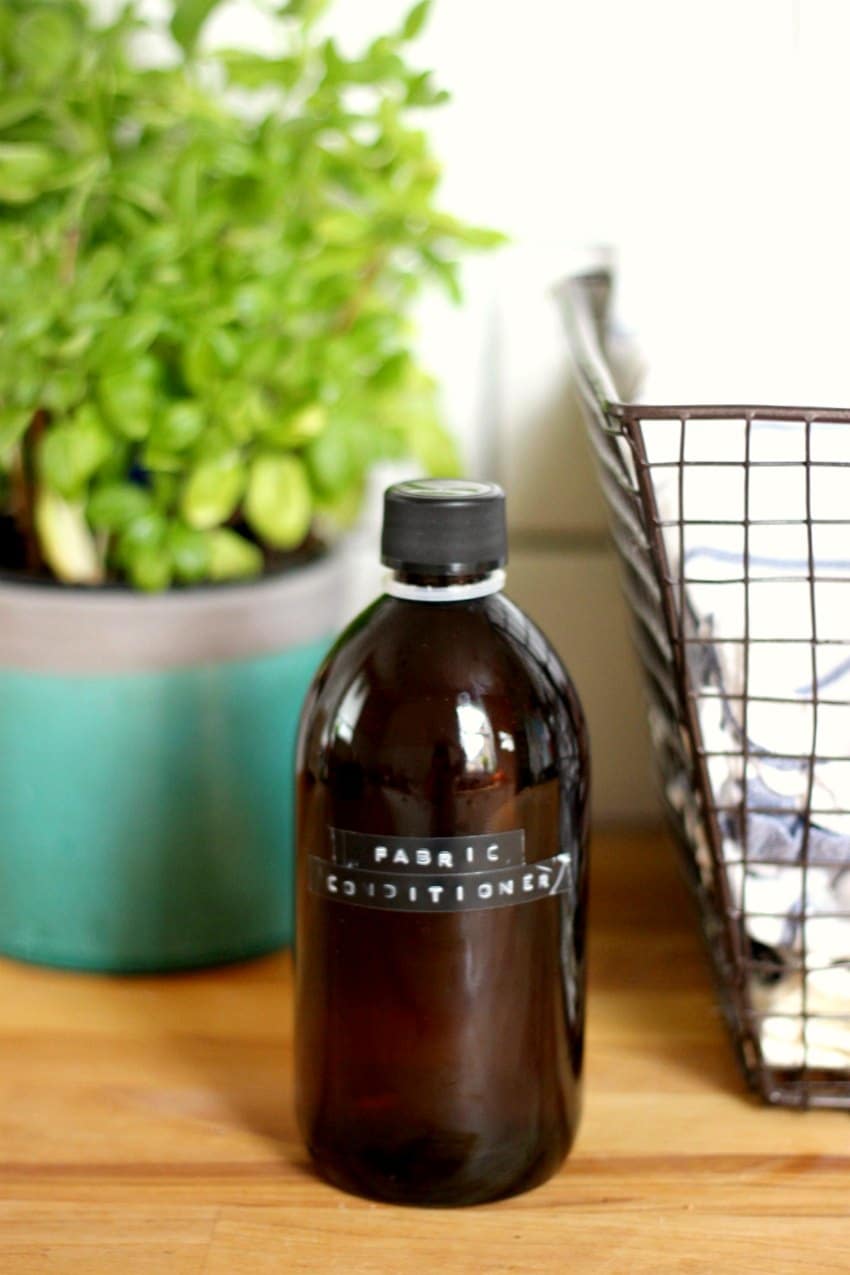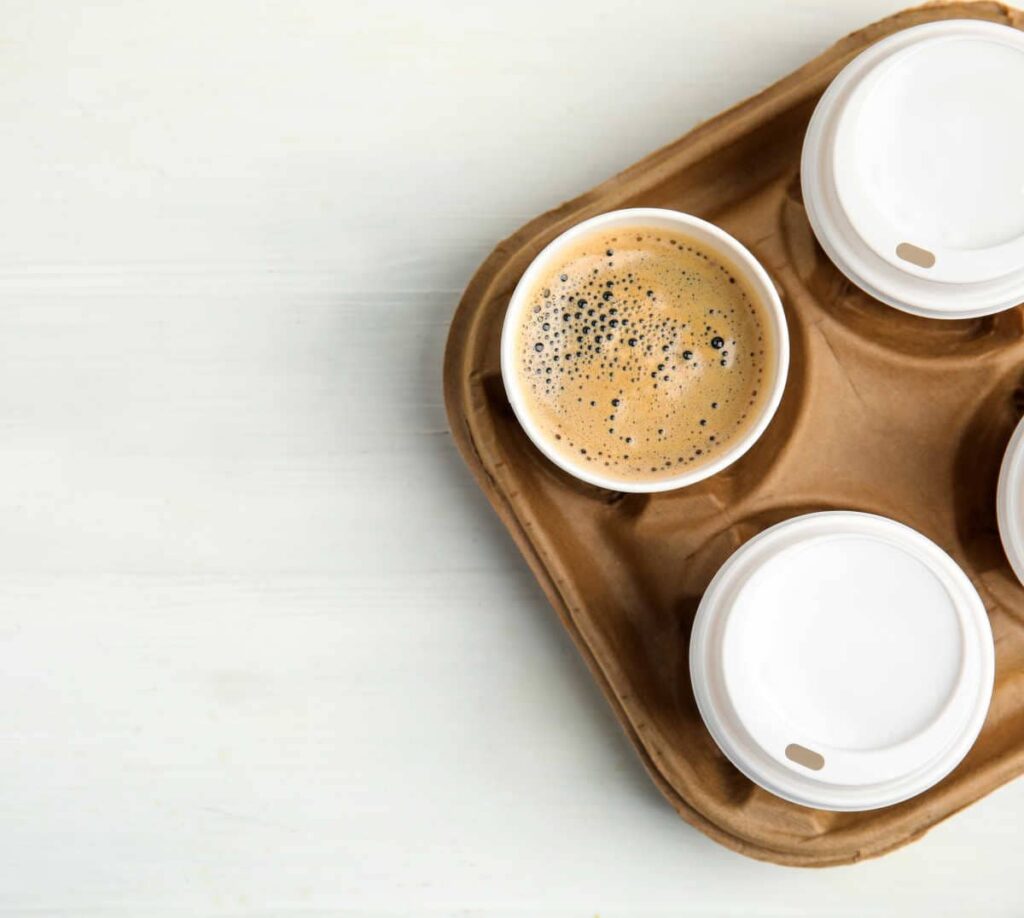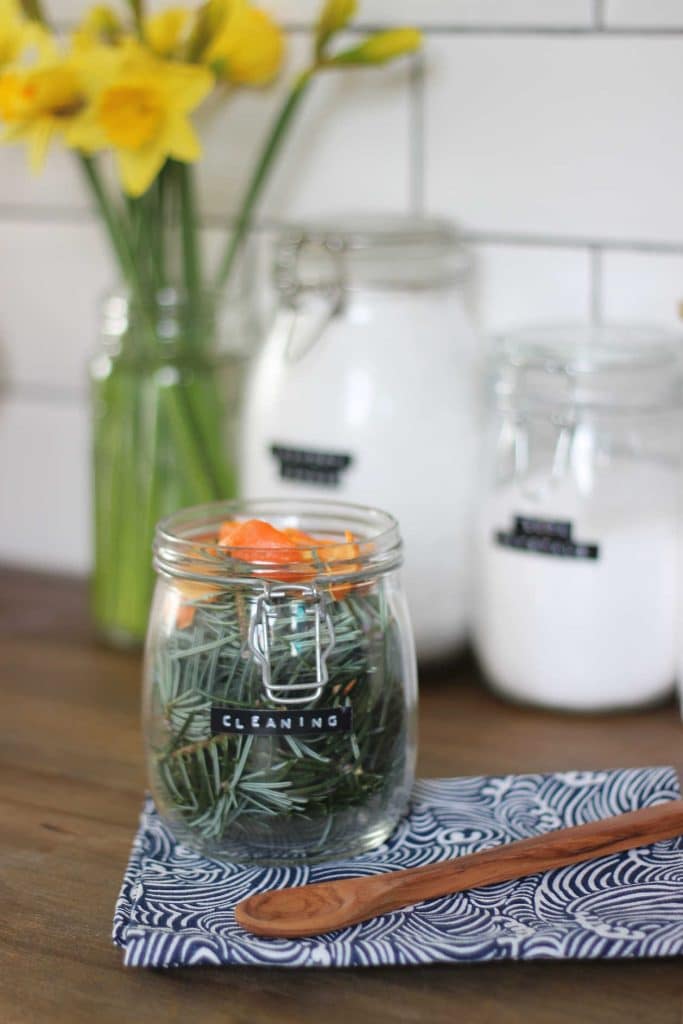How To Make Your Own Fabric Conditioner In Seconds
To support the running costs of Moral Fibres, this post contains affiliate links. This means Moral Fibres may earn a small commission, at no extra cost to readers, on items purchased through these links.
Learn how to make your own natural and non-toxic fabric conditioner, plus discover the four main reasons why you should switch from using conventional fabric softener today.
You might be wondering why you need to make your own fabric conditioner when it’s widely available in the shops. And you might think you’re helping to prolong the life of your clothes when you reach for the softener.
If you’ve thought these things, then I don’t blame you. Decades upon decades of marketing have convinced millions of us that fabric conditioner is a vital element of the laundry process. There’s a whopping $18.6 billion global market for the product.
But, I’ve got a little secret for you. You don’t need to use a conventional fabric conditioner. The eco-friendly alternative I’m going to share costs just pennies per load. Plus it is much more effective, load per load, at softening your clothes.
Table Of Contents
- How To Make Your Own Fabric Conditioner
- Why It Works
- Why You Should Ditch The Shop-Bought Fabric Conditioner
- More Eco-Friendly Laundry Top Tips
How To Make Your Own Fabric Conditioner

I’m a big fan of making my own natural cleaning products. I first made my own fabric conditioner 20 years ago. What I’ve found, through VERY extensive testing is that this homemade alternative is much cheaper and better for you, your clothes, your washing machine and the environment compared to conventional fabric softener.
What’s more, this fabric conditioner is perfect for people with sensitive skin. It contains just two simple ingredients (one of which you can skip if you have super sensitive skin).
You Will Need
- 500ml Glass bottle
- 500ml White vinegar – here’s where to buy white vinegar in bulk for cleaning
- 30 drops of essential oil of your choice (or skip if you have very sensitive skin). My favourite oils to use are lemon and sweet orange. These give your clothes a light but zingy citrus aroma. However, feel free to substitute depending on your preferences.
Directions
- Fill your bottle with vinegar.
- Add around 30 drops of essential oil of your choice to your vinegar. If you have sensitive skin, avoid citrus-based oils, or omit them altogether for a scent-free conditioner.
Instructions For Use
Shake well before use.
At the stage when you are adding your laundry detergent to your machine, fill the fabric conditioner compartment of the drawer up to the line with the scented vinegar. For a half load of washing, decrease the amount by half.
Using this mixture will give your laundry a delicate and clean aroma without a hint of vinegar – I promise! If there is still a trace of vinegar on your wet clothes, be assured this will dissipate as the clothes dry.
Why It Works
Vinegar makes for a great natural fabric conditioner because its acidic nature cuts through soapy residue and limescale, helping to keep white clothes whiter. It’s also safe to use on coloured fabrics.
Unlike conventional versions, this homemade version won’t interfere with the absorbency of your laundry. This will make your clothes and towels last longer and smell better.
And unlike conventional brands, it won’t leave deposits in your washing machine or plumbing. In fact, vinegar cuts through grease so you’ll actually clean your washing machine every time you do a load of laundry. Double win!
Why You Should Ditch The Shop-Bought Fabric Conditioner
Not convinced by homemade fabric conditioner? Here are four reasons to ditch the softener in favour of an effective eco-friendly alternative.
1. It’s Terrible For Your Clothes & Towels
Fabric conditioner works by applying a thin, waxy coating to your laundry. This coating has to be water-resistant to survive the washing process.
The issue here is that this waterproof coating makes your clothes feel softer. However, the coating lessens your laundry’s ability to properly absorb water and laundry detergent. This means your clothes won’t respond as well to washing and will be more likely to lock in bad odours.
The chemical coating can also make your towels less absorbent over time, and reduce the performance of sweat-resistant sportswear.
Fabric conditioner is also harsh on cotton or bamboo clothing, which normally absorbs light sweat on its own. As soon as fabric conditioner is introduced, that absorption is lost.
And when used on clothing containing elastane and nylon (such as leggings, skinny jeans, and bras), standard conditioner can leave a residue that dulls the item’s finish and attracts odour-causing bacteria.
2. Some Brands Aren’t Vegetarian Or Vegan-Friendly
Rather alarmingly, some conventional fabric conditioners aren’t vegetarian- or vegan-friendly.
One ingredient found in certain brands is dihydrogenated tallow dimethyl ammonium chloride. In simpler terms: animal fat.
This fat is extracted from suet – the fatty tissues around the kidneys of cattle and sheep. Suddenly that colourful bottle sitting in your laundry room doesn’t look quite as innocuous as it did at first.
3. It’s Not Great For Us Or The Environment
Fabric softeners often contain a cocktail of non-renewable petroleum-based chemicals, which are not easily biodegradable.
A study by the University of Washington found that certain chemicals contained in fabric conditioner are likely carcinogens, developmental toxins, and allergens that can contribute to eczema.
Once these chemicals are washed down the drain they can also become highly toxic to aquatic life.
4. It’s Bad For Your Washing Machine & Plumbing
As many brands of fabric conditioner are petroleum-based and full of fat, they can also clog up your washing machine (especially if it’s a front-loading one) and pipes.
Fabric conditioner can also encourage the growth of mould in your machine. Due to its fat content, when it is exposed to air and moisture, it can become a breeding ground for bacteria and mould.
And because of the design of most machines, it means that the water-resistant softener is never quite washed out properly. This leaves a residue that only encourages the growth of bacteria and black mould throughout your whole washing machine. Which does not make for pleasant reading.
If you have been using a conventional fabric conditioner, then it’s really easy to clean the bacteria and mould from your washing machine. Check out my guide on how to clean a washing machine to banish bacteria and mould for good.
More Eco-Friendly Laundry Top Tips
Looking for more eco-friendly laundry advice? I’ve got lots to help your clothes look better for longer.
- How to wash wool
- How to wash striped clothing
- A guide to natural stain removal
- Sustainable alternatives to tumble dryer sheets.
Found this post useful? Please consider buying me a virtual coffee to help support the site’s running costs.





I can’t access the dispenser drawer due to the location of the machine, so while detergent in pods is fine, how could i do conditioning?
Hi Dan, short of moving your washing machine so that the dispenser drawer is accessible, I’m afraid there isn’t a way to use this fabric conditioner as it needs to be added at a specific stage in the wash cycle to be effective.
Does the bottle have to be glass? I have a pint bottle of vinegar which I could use and put in some oil. I’ve been using just oil but hit or miss how many drops go in, and I like lemon with rosemary. Thank you
Hi Marie, no you can use plastic. Over time, the essential oils might degrade the plastic – hence why I recommend glass – but it won’t happen overnight. It’s just something to be aware of over the longer term!
Silly question but does the oil stain the clothes?
I’ve never had a problem with staining, but if you are worried you can omit the oils.
Have used vinegar as a fabric conditioner before but can happily now add a scent ! For those that still tumble dry and suffer static try adding a ball of tin foil into your tumble dryer. Will need replacing every so often but seems to work !
Ive been using this recipe for a little while now and, as suggested elsewhere on this site, I subbed citric acid for the vinegar. My coloured clothes are now all slightly faded and its quite noticeable. A quick Google revealed that citric acid acts as a bleaching agent. Might be worth clarifying that this is one recipe where you probably shouldnt substitute citric acid for the white vinegar.
For those allergic to any gluten problems with malt vinegar why not try using apple cider vinegar. Lovely fresh smell and equally as effective.
White vinegar sounds a great idea. Applying logic (without actual practical testing) my thought is that because vinegar has a de-scaling effect then it might release some of any existing machine ‘sludge/limescale’ into the final rinse items.
If (?) that is the case then before you start routinely using white vinegar as a fabric conditioner/scent carrier it might (?) perhaps be advisable to give your machine a good and proper de-scale first. Thereafter perhaps the white vinegar might also help to keep the machine sludge/limescale free and make its perfume oil addition more effective.
Thank you for this article. I’ve been using white vinegar instead of fabric conditioner for years but never thought to add an essential oil, great idea! The dispensing drawer of my machine doesn’t get slimy and gunky anymore and whilst I guessed that was down to the vinegar, I didn’t understand why until reading this. Thanks again!
I’m really looking forward to trying this, I have just discovered soap nuts instead of soap powder so this will make a nice addition.
Hello, this is such a great idea but as I am allergic to gluten white vinegar is a big no no for me. Do you have any suggestions what to use instead?
Hey Lesley, I haven’t heard of this before. I know malt vinegar is a big no no, but as white vinegar is made from distilled alcohol I would have assumed it would be ok! Every day certainly is a school day! I don’t have any other suggestions I’m afraid.
Definitely going to give this a go. How long does the fabric softener last?
Forever! It’s only when you add water that homemade cleaning products require a short shelf life. If you don’t use it up within a reasonable amount of time (say 6 months) then do check that it still smells and looks normal before using – if it starts to small bad or develop a slime/sludge then it’s time to discard but I’ve never gotten to that stage yet!
Coconut essential oils I should have said.
Just tried this with coconut oil. It was amazing the smell fabulous and the clothes came out lovely and soft. No more fabric conditioner for me. Thank you.xxx
Karen
This is a really useful post! Some shop-bought fabric conditions can be awful for your drains and cause a lot of damage, this is because the chemicals are water resistant so they accumulate in a slimy substance which can lead to blockages, which as we all know can cause a lot of problems and headaches. This also means a lot of maintenance work to unclog your drains with the use of more chemicals, so, any solution you have which stops this is no doubt going to be very useful!
Hi thank you for another really interesting article. I have long held doubts about fabric conditioner, some brands have made my clothes feel quite waxy and the perfumes are so strong they can make me sneeze so I was very keen to give this a try when I came across this idea a few months ago. It does work really well but the only problem I found was that it didn’t address build up of static in some of our clothing. It’s not a problem in the cotton stuff but some of the jumpers I have (synthetic materials but I am trying to wear them out before I can consider replacing them and there is still plenty of wear left in them!) just seem to generate so much static electricty I’m thinking of selling it to the National Grid! This has sadly got me shamefully switching back to fabric conditioner although I do buy Ecover or Method only now. Has anyone else had this problem? Maybe I should just persevere with the vinegar and think of the static problem as a small price to pay!
I haven’t heard of that before Rowena, it’s not something I’ve really come across. I try and dry everything outside or when that’s not possible (like today) I hang clothes on the clothes horse. When I do use the dryer I have been using wool dryer balls and I haven’t noticed too much cling.
I haven’t found anything or process to eliminate the static problem encountered by synthetics. I use unscented dryer sheets only for my synthetic items, in the winter, when I have to use the dryer. I’ve found some synthetics do OK being line dried.
Hi so probably a silly question but is it just normal white distilled vinegar? Also best place to buy essential oils please
I was also wondering if it was Distilled or plain white vinegar !
I use plain white vinegar Amanda, and I buy it in bulk. There is more detail here on that: https://moralfibres.co.uk/where-to-buy-white-vinegar-in-bulk/
Rowena. I lived long before fabric conditioner was a thing. Everything synthetic used to cling, especially if I was wearing tights(the fine kind not the thick). Skirts used to cling to my legs and bottom, a totally horrible look and feel. Trouble was, most carpets were also beginning to be or contain synthetic materials too, so double whammy. Then along came fabric conditioner, and the static stopped, it was amazing. I really am not sure I want to go back to those days, but also I want to do the right thing for the environment. I have used vinegar on towels for a few years now though.
I tend to just drop in some lavender oil, undiluted. Is this not a good idea?
It’s not a bad idea – it will scent your clothes without any artificial perfume, but I don’t think it will soften them. But if that isn’t an issue to you then keep using the oil!
This is great, thank you! I’ve already started to scale back the amount of fabric conditioner I use as I wasn’t sure the benefits outweighed the negatives, but this is the perfect compromise. Is it added to the machine at the beginning of the wash cycle like a regular fabric conditioner?
Yes, at the start when you add the detergent!
How much of your fabric softener do you use per load?
My machine has a fabric conditioner compartment that has a little line on it – I just fill it up to the top. I think it’s about 2 tablespoons but I’ll double check next time I put a load of washing on!